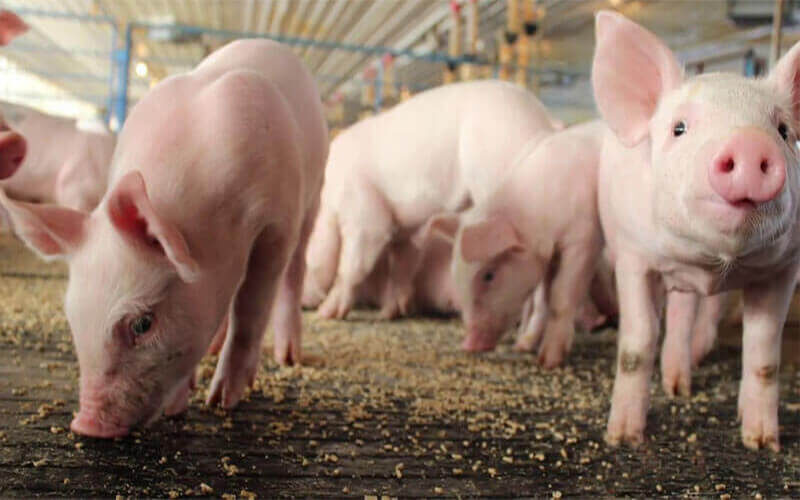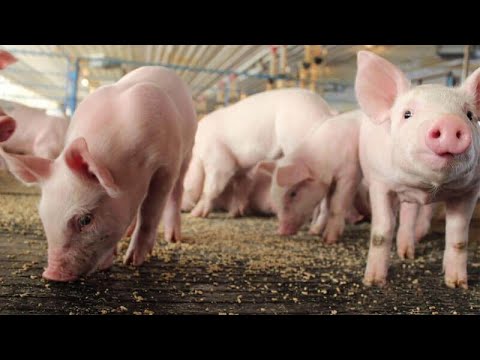why making pig feed pellet?
As a pig farmer, your goals are simple: raise healthy, fast-growing pigs and keep your feed costs under control. These two goals can sometimes feel like they are working against each other. But what if there was a way to achieve both at the same time?
Making your own pig feed pellets is the most effective way to take control of your farm’s success. It allows you to provide the best possible nutrition for your animals while significantly cutting down on your biggest expense. This guide will give you a simple, easy-to-follow process, covering everything from choosing ingredients to cooling your finished pellets.
video of how to make pig feed
The Benefits of Making Your Own Pig Feed
Switching from buying bagged feed to making your own organic pig feed is a big step, but the benefits are even bigger.
Better Nutrition & Less Waste
Have you ever noticed how pigs will sort through loose feed, eating their favorite bits (usually the corn) and leaving the rest? This means they miss out on essential vitamins and proteins. With pellets, every single bite is a complete, nutritionally balanced meal. This prevents selective feeding and drastically reduces the amount of feed that gets wasted on the ground.
Improved Digestion for Healthier Pigs
The process of making pellets involves heat and pressure. This can actually help break down the complex starches in the grains, making the feed easier for your pigs to digest. Better digestion means better nutrient absorption, which leads to healthier animals and more efficient growth.
Lower Long-Term Costs
The economics are simple. Buying raw ingredients like corn and soybean meal in bulk is always cheaper than buying finished, branded feed from a store. Your initial investment in equipment will quickly be paid back by the daily savings on your feed bill.
Complete Control Over What Your Pigs Eat
This gives you incredible peace of mind. You know exactly what is going into your feed. There are no mystery fillers, no low-quality ingredients, and no unwanted additives. You have 100% control over the health and diet of your animals.


How to Make Pig Feed Pellets Step-by-Step Process
Step 1: Choosing Your Ingredients (The Feed Formula)
A great pellet starts with a great recipe. Your pig feed formula needs a balance of energy, protein, fiber, and essential nutrients.
Energy Sources (The Base of the Diet)
This makes up the bulk of the feed and provides the calories your pigs need for their daily activities. Good energy sources include:
- Corn (Maize)
- Barley
- Wheat
- Sorghum
Protein Sources (For Muscle Growth)
Protein is essential for building muscle, especially in growing pigs. Common protein sources are:
- Soybean Meal
- Canola Meal
- Fish Meal (often used in starter feeds)
Fiber Sources (For Digestive Health)
A small amount of fiber is important for a healthy gut. Good sources include:
- Alfalfa Meal
- Rice Bran
Essential Vitamins & Minerals (Crucial for Health)
This is a step you cannot skip. Pigs need a wide range of vitamins and minerals to prevent health problems. The easiest way to ensure this is by adding a high-quality, pre-formulated swine vitamin and mineral pre-mix to your recipe.
Important: Tailoring Recipes to the Pig’s Age
A pig’s nutritional needs change dramatically as it grows.
- Starter/Weaner Pigs need a feed with very high protein to support early growth.
- Grower & Finisher Pigs need a balanced diet with high energy to build muscle and fat.
- Sows (Breeding Pigs) have unique needs for vitamins and minerals to support pregnancy and milk production.
Disclaimer: It is highly recommended that you consult an animal nutritionist or your local veterinarian to get a precise feed formula that is perfect for your pigs and the ingredients you have available.


Step 2: Getting the Right Equipment
You will need a few key pieces of machinery to turn your raw ingredients into pellets.
- The Grinder (A Hammer Mill): This machine’s job is to take your whole grains and grind them into a fine, consistent powder. A fine grind is essential for a well-mixed and durable pellet.
- The Mixer: After grinding, you need to blend all your powdered ingredients together. A mixer ensures that the protein, energy, and vitamin pre-mix are evenly distributed throughout the batch.
- The Pig Feed Pellet Machine (A Pellet Mill): This is the core of your operation. It takes the final mixed powder, adds a bit of moisture, and uses intense pressure to force it through a die, forming the solid pellets.
Step 3: The Pellet Making Process (A 4-Step Guide)
Here is the simple, four-step process for making your pellets:
- Grinding: Your first step is to grind all of your main grain ingredients. The goal is a consistent, flour-like texture, as this helps the ingredients bind together later.
- Mixing: Place all of your ground ingredients, protein meals, and your vitamin/mineral pre-mix into the mixer. Mix for the recommended amount of time (usually 3-5 minutes) to ensure every part of the mix is nutritionally identical.
- Pelletizing: Before feeding the mix into the pellet machine, you may need to add a small amount of moisture (usually with steam or a fine water mist) to help the ingredients bind. The machine will then use its roller and die to press the powder into dense pellets.
- Cooling & Drying: The pellets will come out of the machine hot, steamy, and slightly soft. They must be spread out in a thin layer on a clean, dry surface to allow them to cool and harden completely. This is a critical step to prevent mold from growing during storage.
Tips for Perfect Pig Feed Pellets Every Time
- Get the Moisture Content Right: The ideal moisture content for making pellets is around 15-17%. If your mix is too dry, the pellets will be dusty and fall apart. If it’s too wet, the machine can get clogged.
- Choose the Correct Pellet Size for Your Pigs: Use a die with smaller holes (3-5mm) for young or starter pigs. For larger grower and finisher pigs, a die with 5-8mm holes is more appropriate.
- Store Your Finished Pellets Properly: Once the pellets are completely cool and dry, store them in a cool, dry place away from sunlight. Use sealed bags or rodent-proof containers to keep them fresh and safe.

FAQ
1. What is the best pig feed formula?
There is no single “best” formula for all pigs. The ideal recipe always depends on the pig’s age (starter, grower, sow), the specific ingredients you have available, and your growth targets. We highly recommend getting a custom formula from an animal nutritionist to start.
2. Do I need a big, expensive machine to start?
No. For small farms with a handful of pigs, there are many affordable, small-scale pig feed pellet machines available. You don’t need a large industrial machine to get the benefits of making your own feed. But for large pig farm, you really need a large pig feed machine.
3. How long can I store homemade pig feed pellets?
If the pellets are properly dried down to a moisture content of around 10-12% and are stored in a cool, dry, and clean place, they can be kept safely for several weeks to a few months without losing significant nutritional value.

